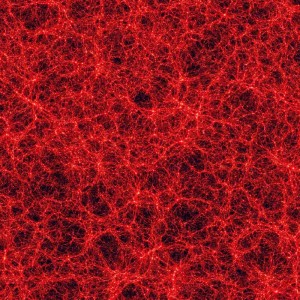 In this text, Manuel DeLanda discusses the “Genesis of form”. The problem for Deleuze is that Western philosophy conception of matter as inert receptacle for forms that come from outside spontaneous self-generation of form does not occur. Speaking about genesis of form, it was generated according to the boundaries and opportunities of the external physical forces. Examples of Form genesis in nature help to understand that the two factors governing the creation of the differentiated instantiations are “Mathematics and Thermodynamics”. Mathematics gives the shape of the form. And to study the form you can put it in a grid, the form itself lies in it. He takes from Thermodynamics key concepts needed for a theory of immanent morphogenesis such as intensity and ontological commitments. The two basic types of structures, for Deleuze, are the “Strata” and the “Self-consistent aggregates”, or the “Tree” and the “Rhizomes”. Strata – Articulation of homogeneous elements(trees) Self-consistent aggregates – Articulation of heterogeneous elements(rhizomes) Both result in isomorphic actual forms. And he also talks about the Virtual versus Actual , the distinction between the possible and the real assumes a set of predefined forms that acquire physical reality as material forms. Form creation in nature can be seen emerging in many different, yet specific morphological patterns. These patterns vary, transform, coexist and evolve, and are found in all life forms. These virtual processes are, according to Deleuze, perfectly real, a real virtuality which has nothing to do with what we call virtual reality. And yet, because this real virtuality constitutes the nuomenal machinery behind the phenomena, that is, behind reality as it appears to us humans, because this real virtuality governs the genesis of all real forms, it cannot help but be related to virtual realities, not only those created by computer simulations, but also by novelists, filmmakers, painters and musicians. Deleuze’s work is, from the beginning, concerned as much with physics and mathematics, as it is with art. Deleuze’s work constitutes a true challenge to language-obsessed postmodernism, a neomaterialism which promises to enrich the conceptual reservoirs of both science and art and that one day could lead to a complete reconceptualization of our history as well as of our alternatives for the future.
In this text, Manuel DeLanda discusses the “Genesis of form”. The problem for Deleuze is that Western philosophy conception of matter as inert receptacle for forms that come from outside spontaneous self-generation of form does not occur. Speaking about genesis of form, it was generated according to the boundaries and opportunities of the external physical forces. Examples of Form genesis in nature help to understand that the two factors governing the creation of the differentiated instantiations are “Mathematics and Thermodynamics”. Mathematics gives the shape of the form. And to study the form you can put it in a grid, the form itself lies in it. He takes from Thermodynamics key concepts needed for a theory of immanent morphogenesis such as intensity and ontological commitments. The two basic types of structures, for Deleuze, are the “Strata” and the “Self-consistent aggregates”, or the “Tree” and the “Rhizomes”. Strata – Articulation of homogeneous elements(trees) Self-consistent aggregates – Articulation of heterogeneous elements(rhizomes) Both result in isomorphic actual forms. And he also talks about the Virtual versus Actual , the distinction between the possible and the real assumes a set of predefined forms that acquire physical reality as material forms. Form creation in nature can be seen emerging in many different, yet specific morphological patterns. These patterns vary, transform, coexist and evolve, and are found in all life forms. These virtual processes are, according to Deleuze, perfectly real, a real virtuality which has nothing to do with what we call virtual reality. And yet, because this real virtuality constitutes the nuomenal machinery behind the phenomena, that is, behind reality as it appears to us humans, because this real virtuality governs the genesis of all real forms, it cannot help but be related to virtual realities, not only those created by computer simulations, but also by novelists, filmmakers, painters and musicians. Deleuze’s work is, from the beginning, concerned as much with physics and mathematics, as it is with art. Deleuze’s work constitutes a true challenge to language-obsessed postmodernism, a neomaterialism which promises to enrich the conceptual reservoirs of both science and art and that one day could lead to a complete reconceptualization of our history as well as of our alternatives for the future.